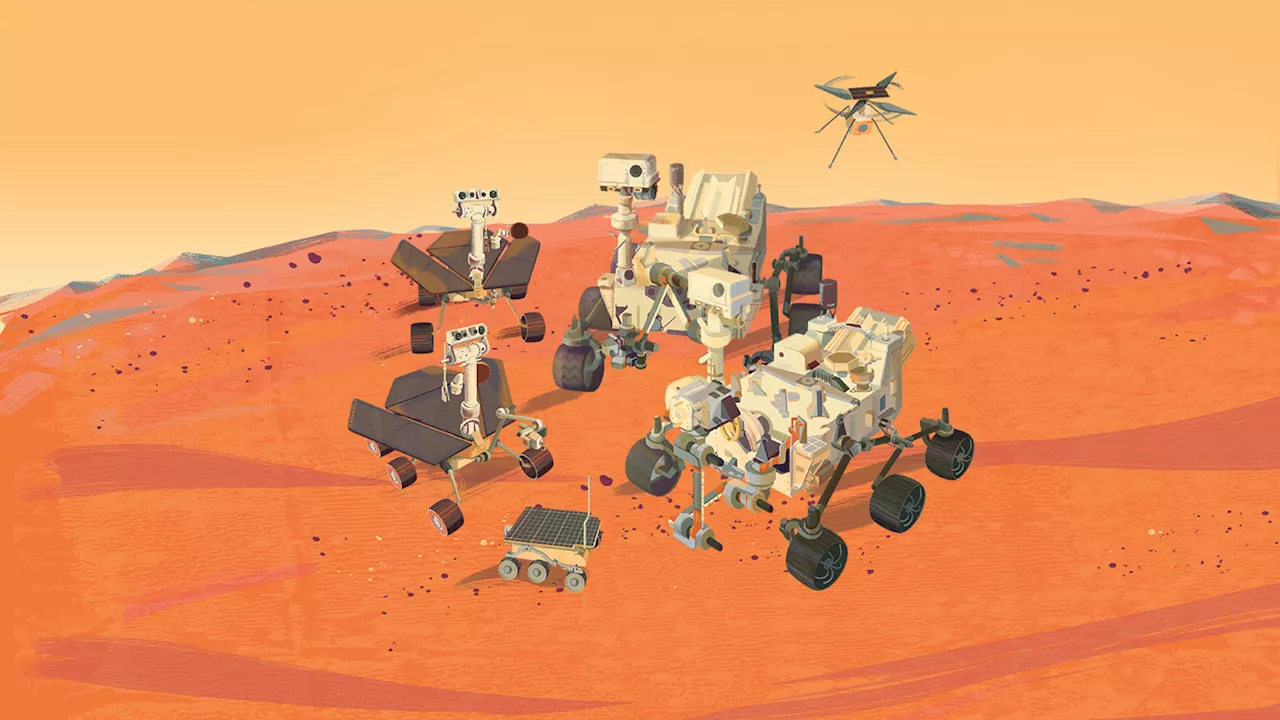Over 25 years, remotely controlled rovers have uncovered Mars’ watery history and continue to search for evidence that life once existed there.
Few things are harder than hurling a robot into space — and sticking the landing. On the morning of July 4, 1997, mission controllers at the Jet Propulsion Laboratory in Pasadena, Calif., were hoping to beat the odds and land a spacecraft successfully on the Red Planet.
Sojourner spent nearly three months poking around the landscape. It was slow going. Mission controllers had to communicate with Sojourner constantly, telling it where to roll and then assessing whether it had gotten there safely. They made mistakes: One time they uploaded a sequence of computer commands that mistakenly told the rover to shut itself down. They recovered from that stumble and many others, learning to quickly fix problems and move forward.
Thus were born the twins Spirit and Opportunity. Each the size of a golf cart, they were a major step up from Sojourner. Each had a robotic arm, a crucial development in rover evolution that enabled the machines to do increasingly sophisticated science. The two had beefed-up cameras, three spectrometers and a tool that could grind into rocks to reveal the texture beneath the surface.
Opportunity, in contrast, became the Energizer Bunny of rovers, exploring constantly and refusing to die. Immediately after landing in Meridiani Planum, Opportunity had scientists abuzz. When Curiosity arrived near the base of Mount Sharp, it immediately spotted rounded pebbles shaped by a once-flowing river, the first closeup look at an ancient river on Mars. Then mission controllers sent the rover rolling away from the mountain, toward an area in the crater known as Yellowknife Bay. There Curiosity discovered evidence of an ancient lake that created life-friendly conditions for potentially many thousands of years.
In the course of driving more than 28 kilometers, Curiosity has weathered major glitches, including one that shuttered its drilling system for over a year. And its wheels have been banged up more than earthbound tests had predicted. The rover will continue to roll until some unknown failure kills it or its plutonium power wanes, perhaps five years from now.
Perseverance went to Jezero to study an ancient river delta, which contains layers of sediment that may harbor evidence of ancient Martian life. But the rover slightly missed its target, landing on the other side of a set of impassable sand dunes. So it). The rocks had cooled from molten magma and were not the sedimentary rocks that many had expected.
United States Latest News, United States Headlines
Similar News:You can also read news stories similar to this one that we have collected from other news sources.
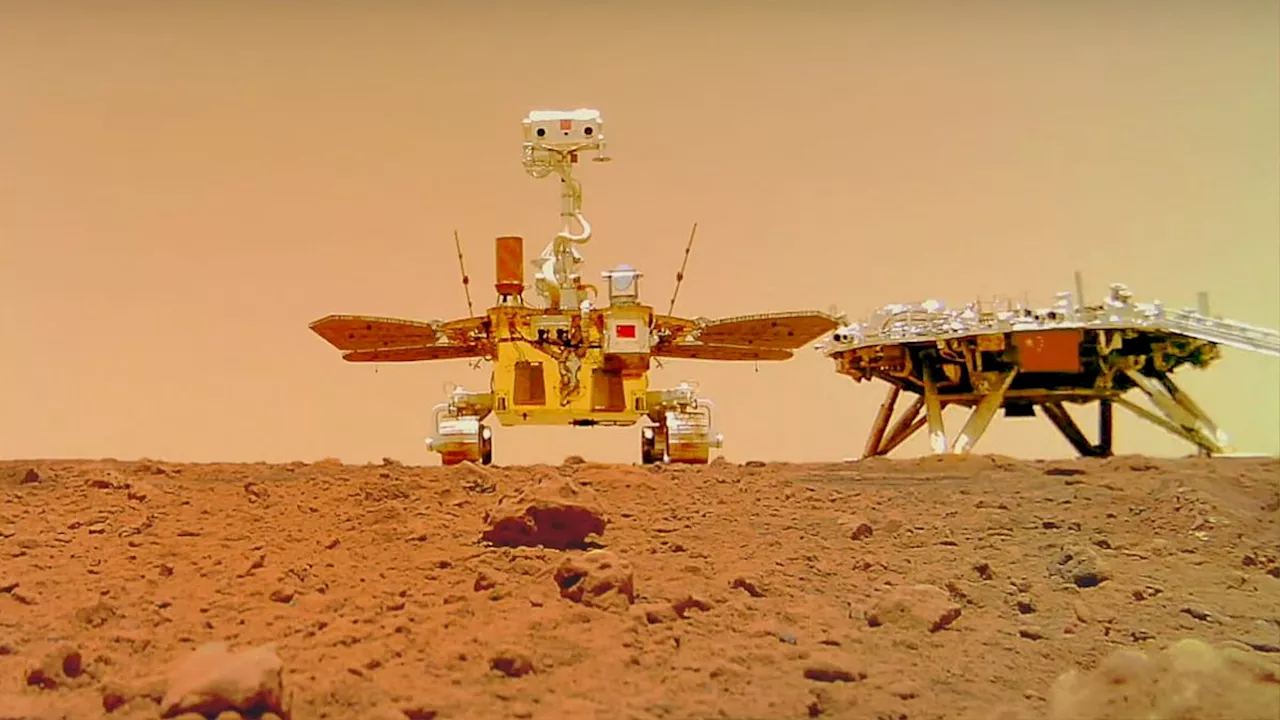 China's Mars rover Zhurong finds possible shoreline of ancient Red Planet oceanSharmila Kuthunur is a Seattle-based science journalist covering astronomy, astrophysics and space exploration. Follow her on X skuthunur.
China's Mars rover Zhurong finds possible shoreline of ancient Red Planet oceanSharmila Kuthunur is a Seattle-based science journalist covering astronomy, astrophysics and space exploration. Follow her on X skuthunur.
Read more »
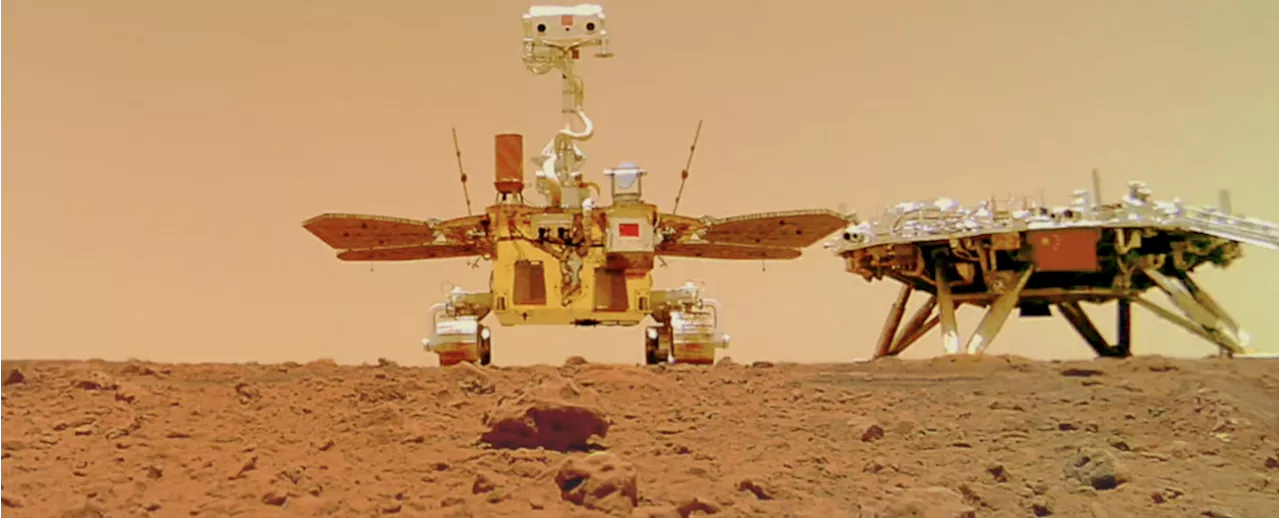 Mars Rover Finds Evidence of an Ancient Ocean on The Red PlanetThe Best in Science News and Amazing Breakthroughs
Mars Rover Finds Evidence of an Ancient Ocean on The Red PlanetThe Best in Science News and Amazing Breakthroughs
Read more »
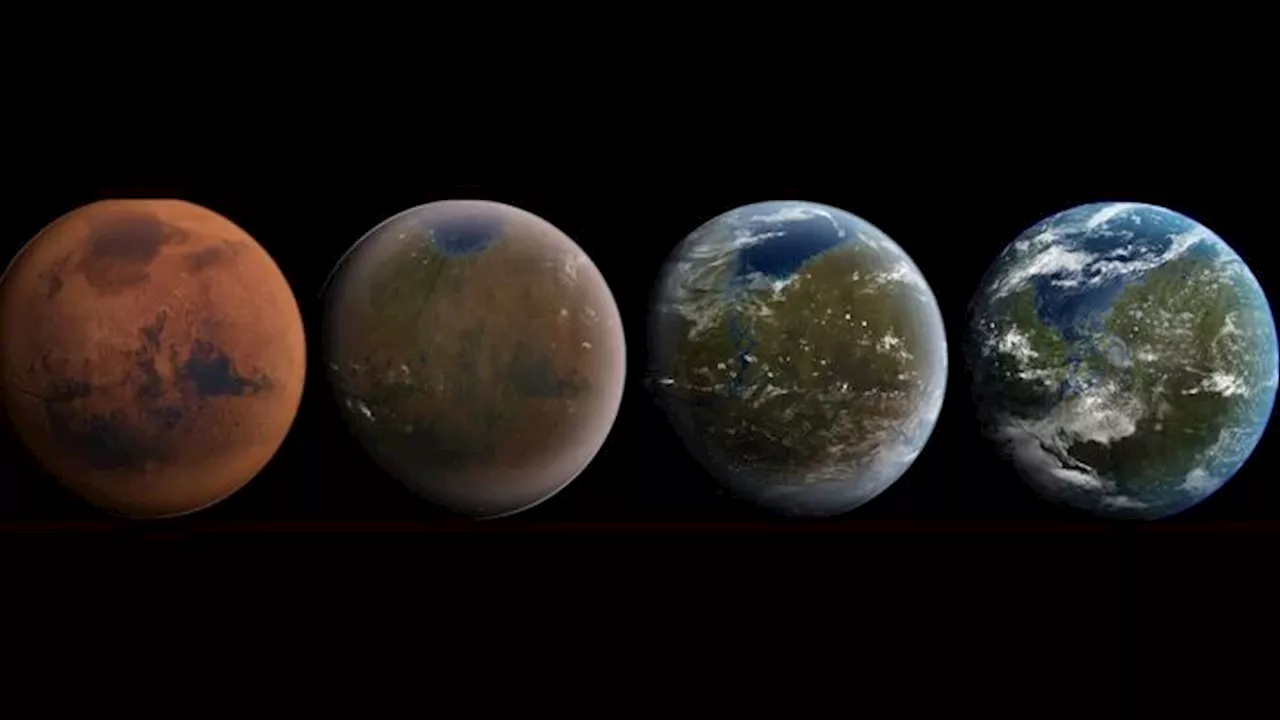 'First tree on Mars:' Scientists measure greenhouse effect needed to terraform Red PlanetLeonard David is an award-winning space journalist who has been reporting on space activities for more than 50 years. Currently writing as Space.
'First tree on Mars:' Scientists measure greenhouse effect needed to terraform Red PlanetLeonard David is an award-winning space journalist who has been reporting on space activities for more than 50 years. Currently writing as Space.
Read more »
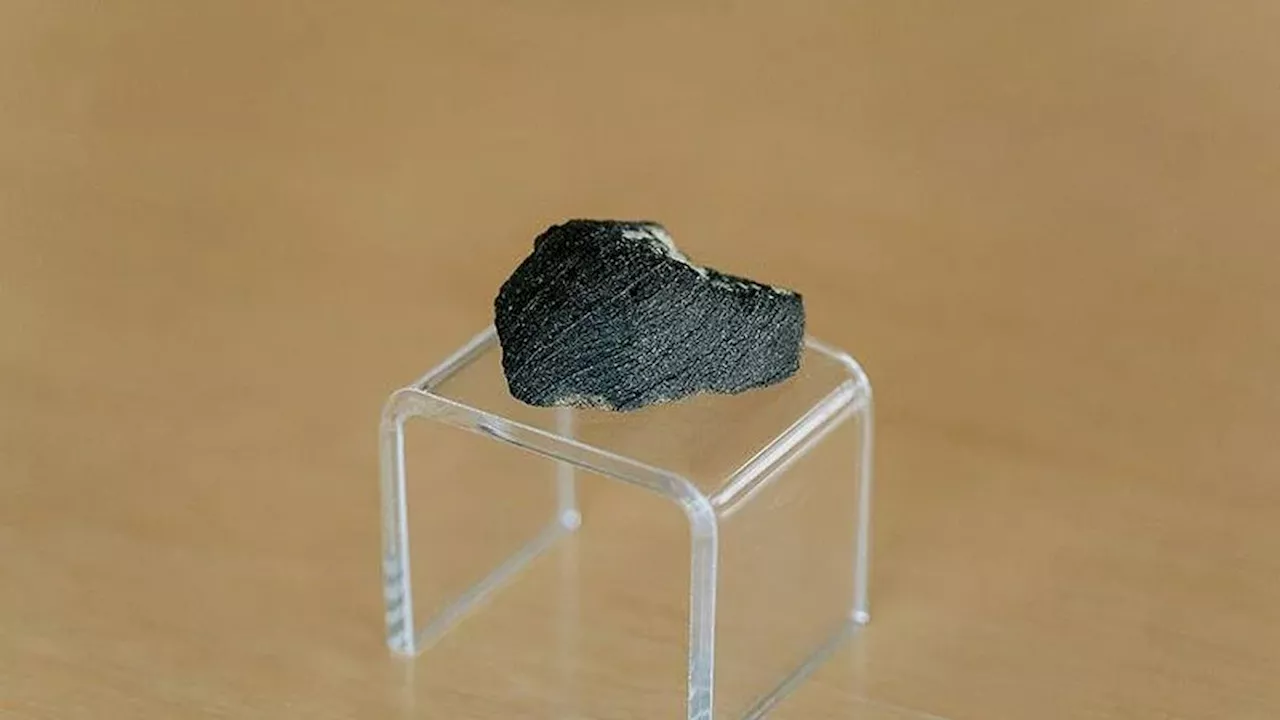 Mars meteorite found in drawer reveals history of water on Red PlanetKeith Cooper is a freelance science journalist and editor in the United Kingdom, and has a degree in physics and astrophysics from the University of Manchester.
Mars meteorite found in drawer reveals history of water on Red PlanetKeith Cooper is a freelance science journalist and editor in the United Kingdom, and has a degree in physics and astrophysics from the University of Manchester.
Read more »
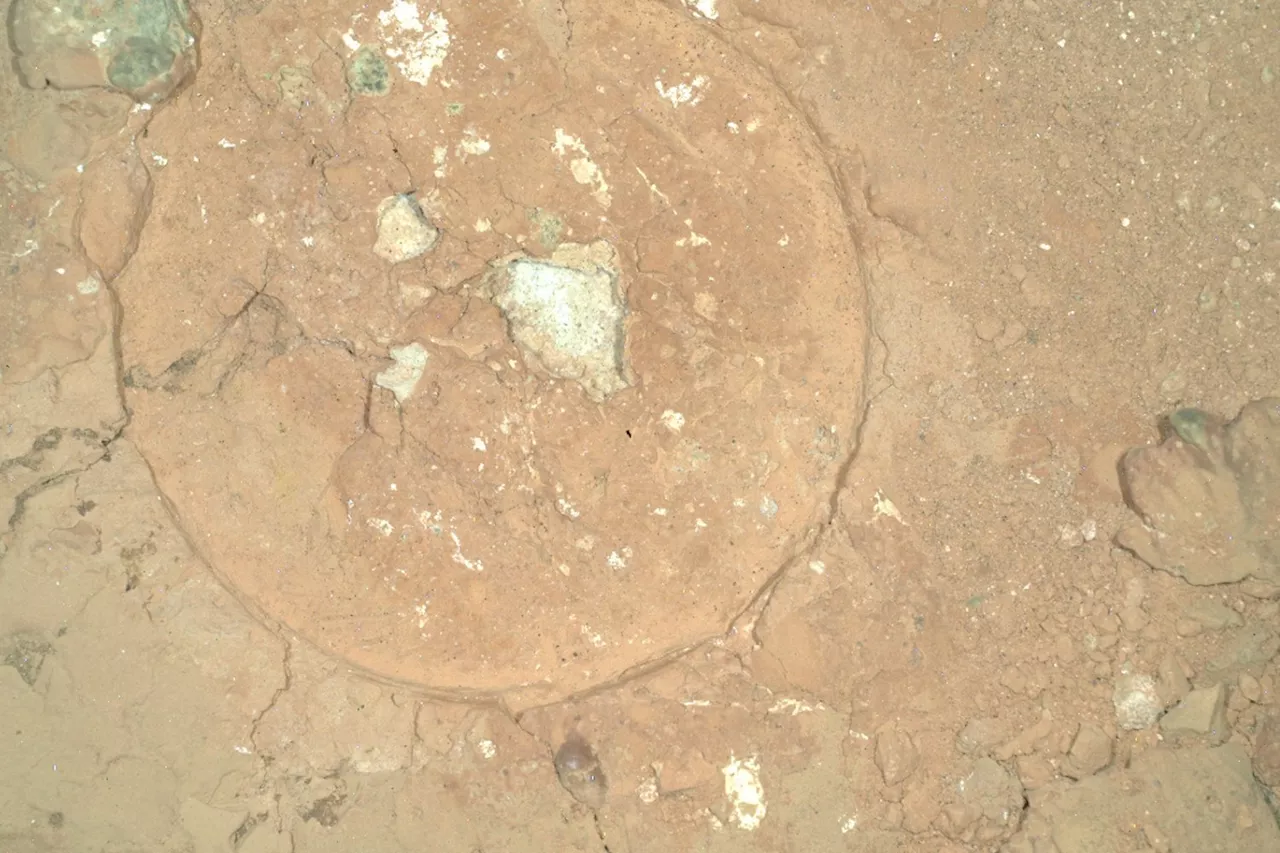 Green Blobs on a Red Planet: NASA Rover Spots ‘Enigmatic’ RockThe rocks indicate an ancient, iron-rich environment, but the rover wasn't able study details of the rock's composition.
Green Blobs on a Red Planet: NASA Rover Spots ‘Enigmatic’ RockThe rocks indicate an ancient, iron-rich environment, but the rover wasn't able study details of the rock's composition.
Read more »
 Webb Reveals a Steam World Planet Orbiting a Red DwarfAstronomers using the JWST have found the first 'steam world.' Scientists theorized about them but this is the first observational proof.
Webb Reveals a Steam World Planet Orbiting a Red DwarfAstronomers using the JWST have found the first 'steam world.' Scientists theorized about them but this is the first observational proof.
Read more »
